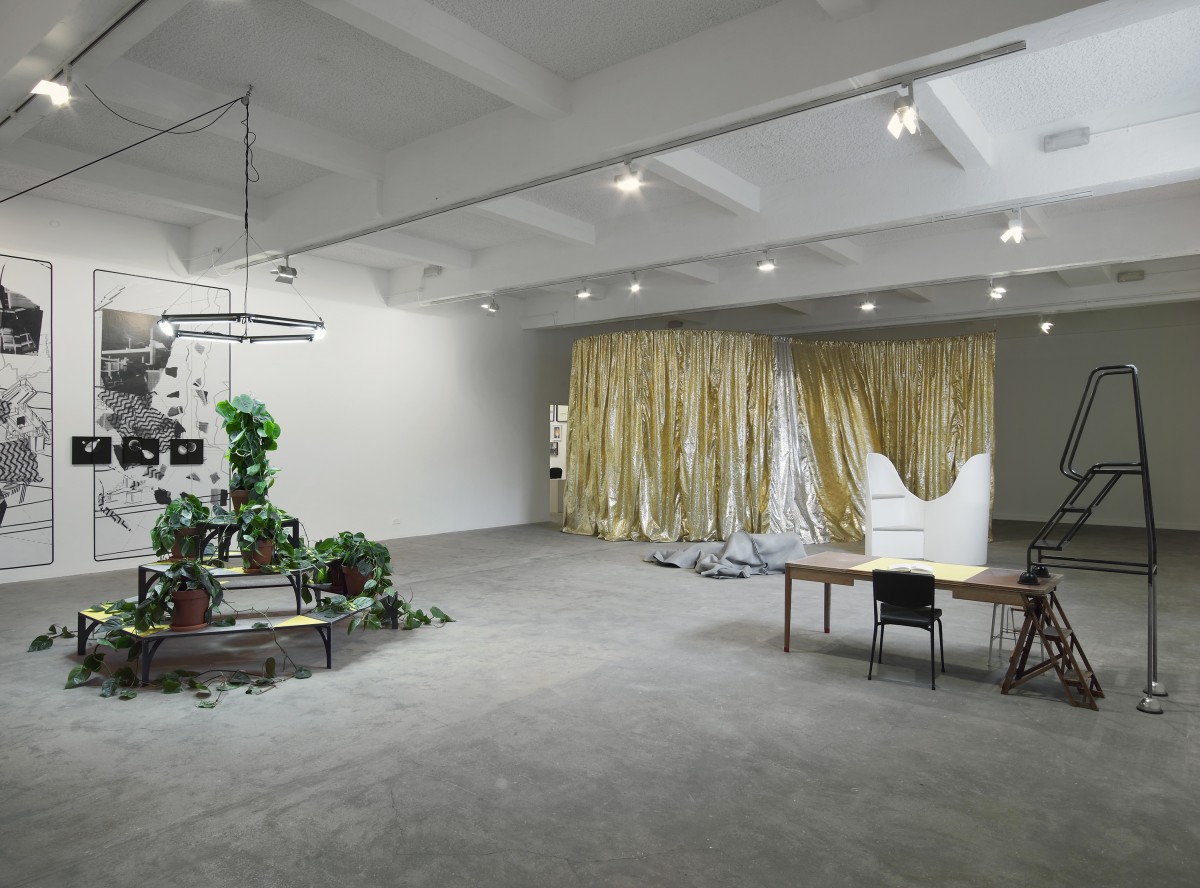


Céline Condorelli, 2014, installation view at Chisenhale Gallery. Photo: Andy Keate. Commissioned by Chisenhale Gallery for How to work together a shared project with The Showroom and Studio Voltaire.
To the Chisenhale Gallery this week, the redoubtable incubator and R&D division for contemporary art that has been powering away in the East End for so many years, and is currently thriving under the directorship of Polly Staple. The gallery is now part of an enlightened new partnership with Studio Voltaire and the Showroom galleries, sharing resources under the banner How to Work Together. Hard times make for innovative solutions.
The artist showing until 22 June is Céline Condorelli, whose first association with Chisenhale goes back over a decade to 2003 when she and artist/curator Gavin Wade (also director of the Eastside Projects gallery in Birmingham) were involved in a project called I Am A Curator. At that time Condorelli identified as an architect and together she and Wade were known as Support Structures. They provided infrastructure and objects for a project that invited different members of the public to curate an exhibition every day. In explaining their contribution to that project Condorelli said: Support is based on generosity. It is critical but not a category. Support is a type of relationship between people, objects, social forms and political structures, in the same way that participation, or conflict, are other forms of relations. While the current exhibition presents an important shift in Condorelli's practice, the concerns remain rooted in architectural space and the political and social relations that produce it and are produced by it.
Thus walking into the gallery the first thing you will notice is that the familiar double doors have been removed. A few paces beyond that hangs a shimmering golden curtain of a fabric that reads as something between space-age and theatrical. What is key here is that our perceptions and physical response to space are being subtly affected by this manipulation of the threshold to the gallery. Once past the curtain the most striking thing, especially for those of us who know the gallery well, is that the artist has caused a window to be revealed in the far wall of the gallery. Suddenly there is natural light in this normally bunker-like venue. You will notice too that the door to the office is wedged open; another important element of the show, this gesture reveals the institutional underpinnings of the exhibition, breaking open the illusion of the white cube and inviting the viewer to contemplate the staff working beyond it.
Ideas around friendship, generosity, comfort and collaboration are central to the exhibition. In the space are objects that are hybrid types of furniture: a curving white structure looks like a contemporary love seat; the draped grey form on the floor is another kind of seat and by the windows is a desk structure, supported by and supporting step ladders that allow you to climb up and peer out over the adjacent canal. What Condorelli is doing here is putting the physical body back into the space. She illuminates some of the historical underpinnings of these ideas in this way:
"Early museums and galleries were really modelled after domestic galleries but then gradually...all comfort, everything that relates to the body, is removed from the museum, until we have something that we recognise as the white cube. (..)Removing comfort corresponds to taking the body - or bodies - out and leaving a disembodied eye in its place: somehow vision is considered the only sense that should be present in the museum. You're not supposed to have any other kind of physicality."
This is a show of the breed that requires a lot of reading, and one that is richly rewarding in its exploration of the politics and philosophy of space, if you do go with it. It will certainly lead you to consider more deeply the environments we move through and how they condition our thinking and behaviour.
Caroline Douglas
Director
Céline Condorelli, Chisenhale Gallery, 64 Chisenhale Road, London E3 5QZ. Open Wednesday to Sunday 1 - 6pm , until 22 June 2014 www.chisenhale.org.uk